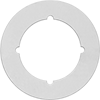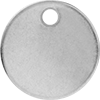Filter by
Material
Steel Grade
Thickness
Mechanical Finish
Tolerance Rating
Specifications Met
Hardness Rating
Certificate Type
Heat Treatment
DFARS Specialty Metals
Finish
Housing Material
Base Material
Plate Material
Raw Materials
Building and Machinery Hardware
Material Handling
Fastening and Joining
Containers, Storage, and Furniture
Communication
Fluid Handling
Electrical
Fabricating and Machining
Facility and Grounds Maintenance
Measuring and Inspecting
Power Transmission
Sealing





































































































